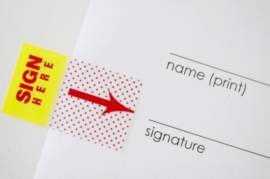
The Facts About the Collection Process

The collection process is the system by which a depository bank obtains payment from an issuing bank for a check. To put it in clearer terms, the bank which accepts a check for deposit needs to collect money from the bank issuing the check. The collection process refers to the process by which the depository bank can obtain such money. It is a key process in the overall function of checks and deposits in America, as it is the process by which those checks are actually paid.
Designation of Banks Involved
In the collection process, there are a number of different terms which are used to designate the different parties. Sometimes, a party might fall under the definition of two different terms. For example, one of the primary terms in the collection process is that of depository bank. The depository bank is the bank into which the check is deposited, the first bank to hold the check after the issuing bank.
The depository bank is also the collecting bank as a result because the depository bank is the one that must attempt to receive payment on the check. Thus, both terms, "depository bank," and "collecting bank," apply to the same party in the collections process.
The two other designations of importance are "payor" and "intermediary bank". The payor is the issuing bank, the drawee of the check. The payor is the bank from which the depository or collecting bank will be seeking payment. The intermediary banks are banks that may hold the check and transmit it, essentially only filling in gaps between the depository bank and the payor bank.
The intermediary banks do not have a direct role to play with regard to the collections process, as they simply facilitate collections between other banks. To find out more about each of these designations and how they interrelate, click the link.
Between Customers of Same Bank
When the collection process comes into play, sometimes the check's drawer and the check's payee will actually both hold accounts with the same bank. In such a case, the collection process is simplified, as the bank does not need to get into contact with any other bank and can simply deal with the transaction internally.
The disadvantage of such transactions is that the bank no longer has any kind of defense against liability. Because it is the only bank involved with the transaction, then that bank would hold most liability in the event of any fraud or forgery (aside from any liability held by the fraudster or forger him or herself). But the transaction itself could be performed very quickly and easily, with a simple extension of credit to the payee and a retraction of credit from the drawee. For more on how transactions are conducted between two customers of the same bank, follow the link.
Collection between Customers of Different Banks
The collection process between customers of different banks is the more difficult type of collection, as it requires one bank to request payment from another instead of being entirely internalized. When collection occurs in this fashion, there are certain rules which must be obeyed. For example, the banks have certain time requirements that limit them with regard to dishonoring checks. The payor bank only has until midnight on the next banking day after it receives the check for payment to dishonor the check and refuse payment. Otherwise, the payor bank is obligated to give payment to the depository bank.
There are certain exceptions to these practices as well, allowing banks to establish a cutoff hour to avoid getting a check without enough time to take the necessary action on that check's receipt. Furthermore, in exchanging checks between two different banks, those banks take on liability based on warranties.
By presenting the check for payment, the depository bank is making presentment warranties, and should it turn out to be in violation of those warranties, then the payor bank need not pay. This also increases the importance of the payor's time limit, as it only has that much time to perform any necessary investigations. To find out more about the collection process and how it functions between customers of different banks, click the link.
Federal Reserve System Clearing of Checks
The Federal Reserve System for check clearing is in place in order to help preserve the overall stability of America's banking system. In times of great economic trouble, the situation has often been exacerbated by the dilemma of banks becoming so unstable that other banks would not want to fulfill transactions with the unstable banks. The Federal Reserve System has, as one of its duties, ensuring that this no longer happens by filling in the system of clearing checks.
The Federal Reserve System processes vast quantities of checks and facilitates transactions between different banks by drawing and depositing funds from special accounts that those banks hold with the Federal Reserve System. This prevents banks from selectively paying checks, while also putting some onus for payment on the Federal Reserve System itself, thereby securing checks to some extent.
Banks can still deal directly with one another, but the Federal Reserve System will protect banks that are otherwise wary of dealing with a given particular bank and will also protect the customers of those banks as a result. To find out more about this check clearing system, and about the Federal Reserve System itself, follow the link.
Electronic Check Presentment
Transactions no longer need to be conducted purely through physical documents thanks to the great advances in digital communications provided in recent years. This has changed the banking system greatly, and the check collection system has changed in a similar fashion.
Thanks to the Check Clearing for the 21st Century Act, otherwise known as the Check 21 Act, electronic check presentment has become a viable and legal method for check presentment. Whereas prior to this Act, the depository bank would have had to physically send the check to the payor bank in order to collect payment from the payor, now the depository bank has the right to make a digital copy of the check in question and then submit it to the payor through the Internet.
This would significantly speed up the process, allowing checks to be sent to their payors in a matter of minutes, as opposed to days. Furthermore, it would actually increase elements of protection, as well, as digital protection signatures can be added to the digital copies of the check to ensure their safety.
Electronic check presentment is not without its flaws, however, not least because the allowance of this practice does not necessarily translate into immediate benefit for the customer. Even though transactions can take place with significantly increased speed, this can sometimes translate into effects to the customer's detriment. To find out more about electronic check presentment and its benefits and drawbacks, click the link.
NEXT: The Full Guide to Using Checks





















